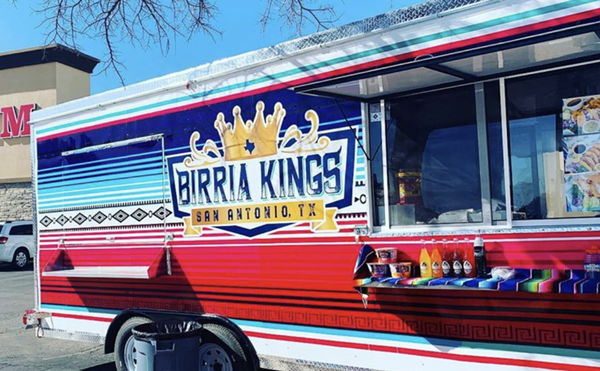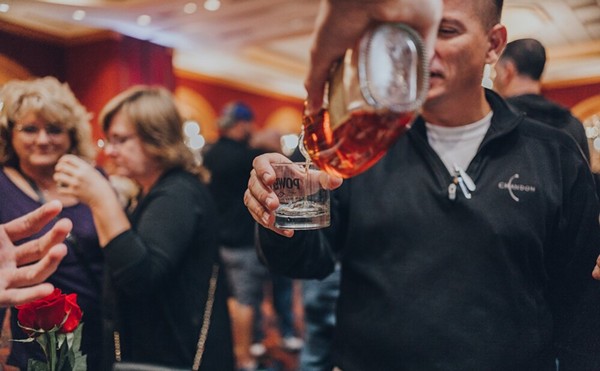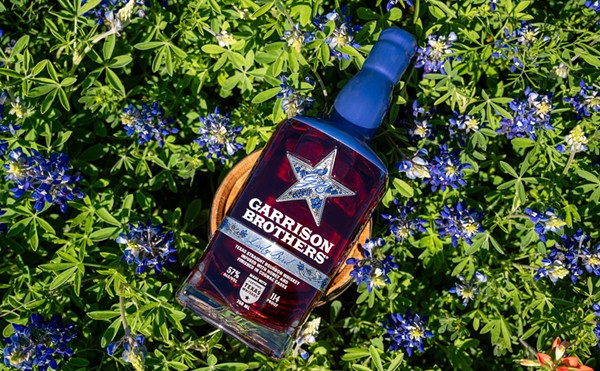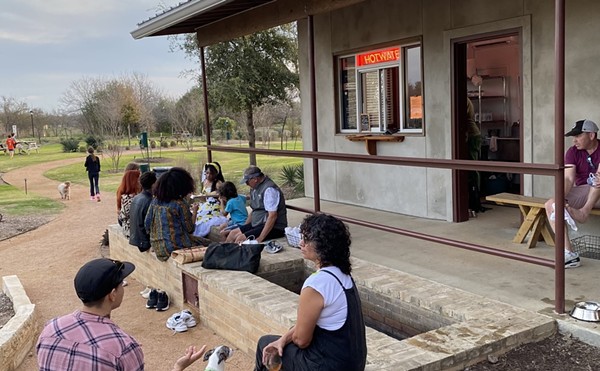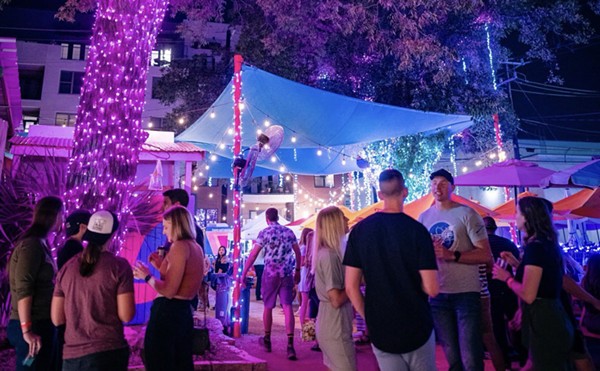Several months passed and I thought nothing of that conversation. Then one day I found myself sitting at a Pizza Hut-turned-taqueria across from Sandwich Garden on Main. As I was looking out the window through a hand-painted image of a torta, I noticed the name of the restaurant — Taqueria Chapala Jalisco.
I remembered the doctor’s challenge and was happy to prove him wrong. I went to the cash register to ask what Jalisco specialties they served. It was then that I saw a business card on the counter. In bold capital letters it claimed, “ESPECIALIZADO EN CARNE ASADA.”
Carne Asada? I thought that was from Northern Mexico. I was now moderately intrigued. Like anyone else, I turned to Google for answers — and found an international foodie message board called CHOW.com. I sent out a message in a bottle: “What is Jalisco style?”
A few days later, a response floated back to shore. A poster named “Eat_Nopal” wrote a Masters thesis of a comment in which s/he laid out a socio-political history explaining the connection between Jalisco and San Antonio. During the World War II Bracero program, which was started to help solve the labor shortage in U.S. agricultural fields, wrote Eat_Nopal, workers were recruited from Jalisco because they were light in skin color and predominately conservative Catholics. With its rich Mexican history, San Antonio became a popular destination for this Jalisco diaspora, and through this process San Antonio became a hotbed for Jalisco cuisine.
Breezing through the business pages of the phone book, I found more than 25 restaurants named Taqueria Jalisco. Perhaps there was something to Eat_Nopal’s argument. Could 25 taquerias de Jalisco all be wrong?
I turned to the professional historians at our state universities. Dr. Emilio Zamora from UT Austin referred me to an organization in Arizona called Alianza Braceroproa that works to get reparations for the Bracero workers. At some point, I stopped to ask myself: How does this relate to Jalisco-style cuisine?“The more you look, the less you’ll find.”
I never heard back from Alianza Braceroproa, so I turned to our own Mexican Consulate, which redirected me to UNAM, our local branch of the University of Mexico, where I talked to a wonderful woman named Ana Maria who said she would get the word out to all her Jalisco friends to help answer the questions: What is Jalisco style?
While I waited on Ana Maria’s network, I pursued other avenues. I went to my bicycle mechanic and street informant Carlos to see what he knew. His father is a wealth of knowledge about the diverse cuisines of Mexico. If he could enlighten me about the Mediterranean nuances of Yucatan-style seafood, then surely he would know something about Jalisco cuisine. Carlos’s father began calling people in Mexico for answers. Was this investigative reporting or shirking responsibility?
As I pondered that question, Ana Maria got back in touch with me. She was able to name four main signatures of the Jalisco diet: red pozole, tortas ahogadas, carne en su jugo, and birria. Excellent.
Ana Maria then informed me that there was no use trying to find any of these specialties around town because all the Jalisco-style places only serve Tex-Mex.
“The more you look, the less you’ll find.”
Impossible, I thought to myself. For clarification she referred me to a co-worker at UNAM named Mike Dubois who lived in Guadalajara, Jalisco, for several years. Mike described Jalisco cuisine in greater detail. All four of the dishes identified by Ana Maria’s contacts, he said, share a wet brothiness: birria, a juicy goat stew; carne en su jugo, meat in its own juice; torta ahogada, a sandwich soaked in the meat’s juices; and red pozole, a soup which, yes, would be inherently wet.
These dishes all sounded wonderful. Unfortunately, Mike also claimed that no place in town served these traditional dishes under one roof, but he did refer me to Guadalajara Grill in La Villita, where the maître d’ used to work at the original Guadalajara Grill in Guadalajara. Perhaps he could give me the definitive answer.
I quickly went over there and found the gentleman in question, but he didn’t feel like talking. It was the cook that I should talk to, the cook who would set me straight. So, I talked to the cook. I asked him about the “four signature dishes” of Jalisco. He agreed with the list, but he also agreed that I wouldn’t find them in San Antonio. At Guadalajara Grill they specialize in Tex-Mex because that’s what sells.
“The more you look, the less you’ll find.”
I would have loved to sue the doctor for some sort of culinary malpractice but he appeared to be right. I went to several Jalisco-themed clip joints around town but I never found the essence of Jalisco on a plata. Sure, an occasional place advertises pozole on the weekends, but it was just as likely to be white pozole, and not the main focus of the menu. Combination plates beat me down in succession from one to three.
I went to see Carlos in the same way an unemployed man collapses onto a bar stool for a 3 p.m. happy hour. As I watched my bicycle wheels spin around and around, Carlos spoke philosophically about Jalisco. Perhaps it was a myth in the way Texas itself is a larger-than-life myth. Perhaps people make attachments to Jalisco to maintain a connection to home. I had never been there and already I felt homesick.
I haven’t seen Dr. Moreau since that night at Panchito’s. He has no idea of the large circle I’ve traveled to get back to where I started. In many cultures, journeys end where they begin yet some sort of wisdom is gained. Had I learned anything? I went home to sleep. This journey was over.
• • • • • • •
Weeks later, I found myself at Picante Grill on Broadway. A page of their menu caught my eye. It had something to do with dishes from Old Mexico, and there I saw the glorious birria, the mutton stew. I never thought I’d be excited about mutton stew, but I enjoyed every muttony morsel. Perhaps other Jalisco dishes are orphaned at other random restaurants?
A spark of foolish hope still burns. I will find the elusive torta ahogada and swim laps in its gravy. The trip might be long and tortuous but I want to create my own ending. It won’t be easy. Twenty-five taquerias de Jalisco may be wrong, but this time I want to get it right. I’ve packed a lunch in case I get hungry along the way.





